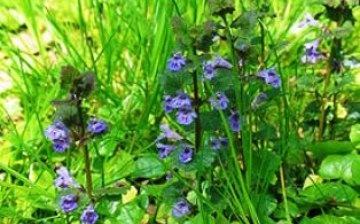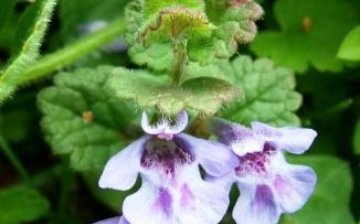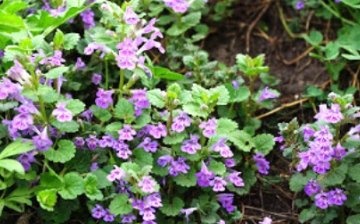Ivy budra or dog mint
Nature has given us a huge number of medicinal plants. A person does not know about all the healing properties. Many plants are not recognized as medicinal by traditional medicine. One of them is Ivy Budra.
Do dogs like mint?
Traditional medicine has long used the medicinal properties of plants to cope with many ailments. And in addition to medicinal properties, people noticed the features of each plant, giving names that seem to us, people of the XXI century, almost absurd and ridiculous. Here is ivy budra, for example, popularly called dog mint. Why? Because budra herb has a mint aroma with a slightly unpleasant tinge. And it tastes bitter, pungent. That is why it is named so - like mint, but not quite, dog mint, in one word.
How and where does Budra grow?
Those plants that are not used in medicine everywhere, that grow under our feet and do not have any special external data, do not attract our attention. And everyone saw Budra ivy more than once. After all, it grows everywhere - in gardens and vegetable gardens, on forest edges, among shrubs, in fields and flooded meadows. Remember how stems rise from the grass, covered with leaves that have a rounded heart-shaped shape, pubescent with sparse, but rather long hairs. And in the axils of the leaves, small two-lipped blue or gently lilac or purple flowers bloom. Ivy budra belongs to the labiate family. It is a herbaceous perennial plant. Its stem is quite long - 60 centimeters in length. those stems on which flowers appear rise in height. Ivy budra blooms all summer, from June to August. This plant has one remarkable feature. Some stems, along with leaves, remain green in winter, and so go under the snow. But in the spring, when the snow cover melts, these stems see the sun in a new - crimson-violet - guise. Such is the transformation.
Budra - a medicinal plant
Despite the fact that the traditional medicine of our country has not yet recognized the ivy-shaped Budra as a medicinal plant, in some other countries, for example, in France, Germany, it has long received the official status of a plant with medicinal properties. Traditional medicine of our country has also used dog mint for a long time to treat many diseases. By the way, another popular name for Ivy Budra is forty-piece. A telling name, isn't it? Essential oil, resins, choline, saponins, tannins, vitamin C, as well as bitterness are found in the medicinal plant Budra ivy. The herb Budra ivy has received widespread use as an anti-inflammatory and choleretic agent. The use of medicines from it not only helps to relieve inflammation of the gallbladder, but also to expel small stones and sand .. it also helps well with inflammatory processes in the stomach and intestines. Dog mint remedies are used in the treatment of bronchitis, pneumonia, cystitis. Also, Budra herb has antidiabetic, anti-cold, wound healing effect.
How to prepare and how to use
The medicinal raw material of this plant is aerial stems with leaves and flowers. Collect it during the flowering period, cutting off the stems at a height of 5-10 centimeters from the ground. First, the collected grass is slightly dried in the sun, and then transferred to the shade.Raw materials are dried unfolded, often turning over to dry evenly. The prepared raw materials are stored in paper bags for a year. infusions and decoctions of ivy budra are used for both external and internal use. the infusion is prepared as follows. 1 teaspoon of prepared raw materials or fresh herbs should be poured with 250 ml of hot water. Then boil for 1-2 minutes and let it brew for 30 minutes. The infusion is filtered through several layers of gauze and squeezed out. A decoction of this herb is prepared as follows. 1 tablespoon of dry ivy budra herb should be poured with 1 glass of hot water in an enamel bowl. Put in a water bath and boil for 15 minutes. Then the dishes are removed from the heat and left to infuse at room temperature for 45 minutes. The broth is filtered and brought to the original volume with boiled water.
Very often, the ivy eBudra herb is used in medicinal preparations, along with elderberry, cocklebur, European hoof and other medicinal plants.
Fresh budra herb is used in the treatment of problematic skin conditions such as dermatoses, ulcers, fractures and inflammation of the joints. In this case, knead the grass, cover its sore spot and bandage it, changing the bandage 2 times a day.
Take care of yourself and be healthy!








